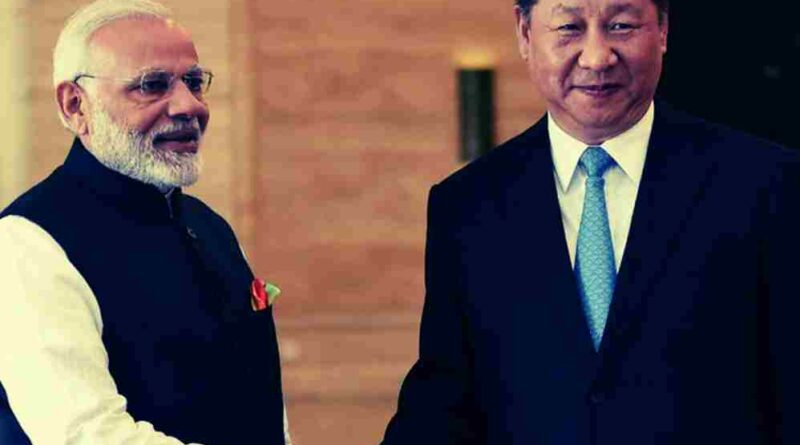China Courts South Asia: Is a New Regional Bloc Emerging Without India?
In a striking diplomatic move that signals a shifting balance in South Asia’s regional dynamics, China has hosted a trilateral meeting with Pakistan and Bangladesh in Kunming, reigniting discussions around a potential new multilateral alliance — one that notably excludes India.
The quiet yet impactful meeting between the three nations has raised eyebrows in foreign policy circles, especially given the long-standing dysfunction within the South Asian Association for Regional Cooperation (SAARC). The Chinese-led initiative appears to be laying the groundwork for an alternative regional platform, which some experts see as an effort to counterbalance India’s dominant role in South Asia.
A Quiet Power Play
While the meeting was framed as a discussion on regional connectivity, development, and cooperation, the subtext is impossible to ignore. China’s increasing economic and political footprint in South Asia, combined with growing strategic ties with Pakistan and Bangladesh, hints at a broader geopolitical recalibration.
China has already made significant inroads into the region through its Belt and Road Initiative (BRI), investing billions into infrastructure projects across Pakistan, Sri Lanka, Nepal, and Bangladesh. The China-Pakistan Economic Corridor (CPEC), for instance, has cemented Beijing’s presence in the region. Now, it seems, China is testing the waters for something even more ambitious: an organized, SAARC-like bloc — but one that operates under its influence.
The SAARC Shadow
For years, SAARC has remained paralyzed, largely due to the strained relationship between India and Pakistan. Since 2016, no full SAARC summit has taken place. India’s firm stance against cross-border terrorism and its refusal to engage with Pakistan in the SAARC framework has created a political deadlock.
Enter China, which is now subtly capitalizing on SAARC’s inertia. The Kunming meeting did not happen in a vacuum; it’s part of a larger trend where China steps into leadership voids, presenting itself as a “neutral” developmental partner. With Afghanistan’s uncertain status, Nepal’s shifting political allegiances, and Sri Lanka’s economic vulnerability, the pieces for a China-led regional collective are already on the board.
Why Bangladesh Matters
Bangladesh’s participation is especially significant. Traditionally a close partner of India, Dhaka’s increasing engagement with Beijing reflects a more nuanced foreign policy strategy. While Bangladesh continues to maintain strong ties with India, its economic interests — especially in infrastructure and trade — are increasingly aligned with China.
By joining the Kunming discussion, Bangladesh is signaling a willingness to explore multilateral ties beyond India’s sphere of influence. Whether this is a long-term pivot or a pragmatic diversification of alliances remains to be seen, but the message is clear: Dhaka is keeping its options open.
What’s at Stake for India?
For India, the Kunming meeting is more than just diplomatic optics — it’s a wake-up call. New Delhi has long prided itself as the natural leader of South Asia. However, its reluctance to engage in dysfunctional regional forums, combined with an assertive foreign policy that sometimes leaves little room for compromise, has created space for other powers to fill the vacuum.
While India maintains strong bilateral relations across South Asia, a multilateral bloc without its presence — especially one involving China — could gradually erode its regional influence. The possibility of countries like Sri Lanka, Nepal, and even the Maldives eventually aligning with a China-led forum cannot be ruled out.
The Bigger Picture
This isn’t just about South Asia — it’s about global alignments. China’s diplomatic overtures in the region are part of a broader strategy to reshape the geopolitical architecture of Asia. By building coalitions that exclude traditional powers like India — or even the United States — China is positioning itself as a counterweight in the multipolar world.
At the same time, countries like Pakistan and Bangladesh are playing their own strategic games. Pakistan, a long-time ally of China, sees the alliance as an opportunity to sideline India diplomatically. Bangladesh views it as a chance to attract more investment and assert its own regional importance.
The Road Ahead
It’s still early days. Whether this trilateral dialogue evolves into a formal organization is uncertain. Much will depend on how India responds — diplomatically and economically — in the coming months. New Delhi may choose to re-engage with regional mechanisms like BIMSTEC or reinvigorate SAARC through bilateral diplomacy.
But one thing is clear: China is no longer content playing the role of an outsider in South Asia. With strategic patience, economic leverage, and growing regional partnerships, it is quietly redrawing the map of influence — one meeting at a time.
The question now isn’t whether SAARC can be revived. It’s whether a new chapter in South Asian cooperation will be written — and who will hold the pen.
Disclaimer
The information and content shared on digitalgithub.com — including articles, blogs, news, guides, and other resources — is intended for general informational and educational purposes only. We do not guarantee the completeness, reliability, or suitability of any information. Always seek the guidance of a qualified professional before making decisions based on the information you read. Use this site at your own risk.

